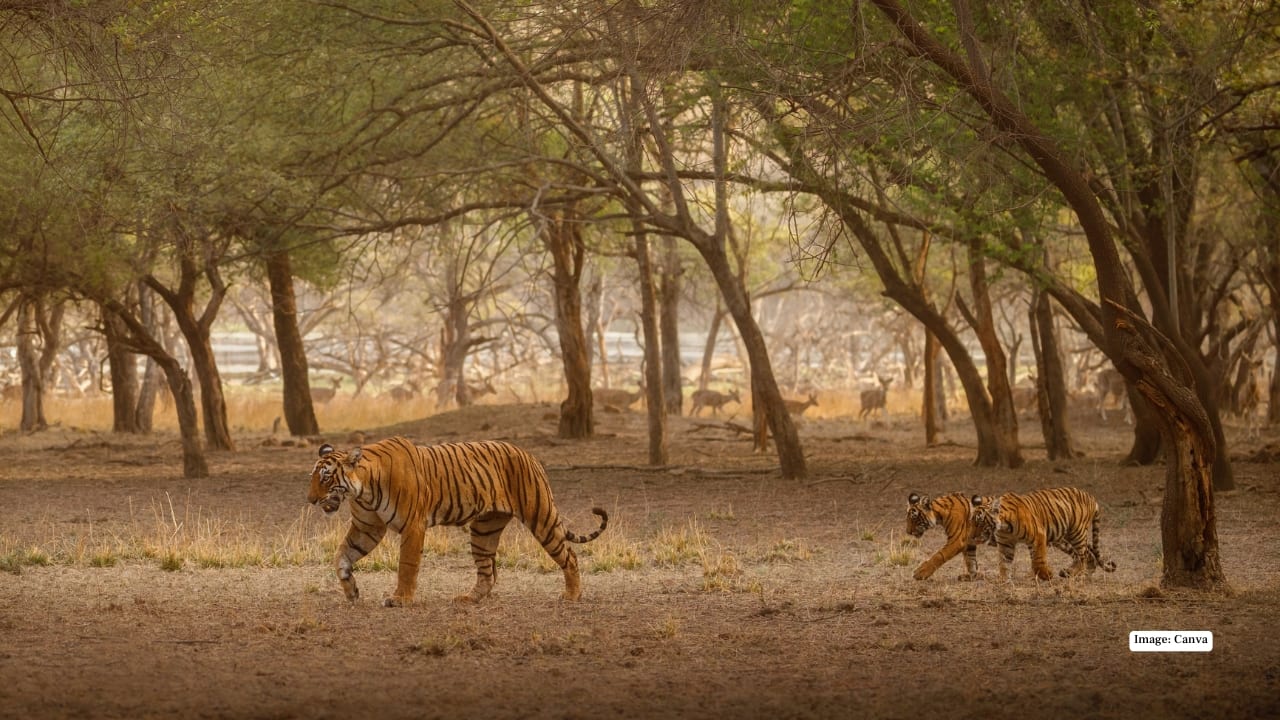



India doesn’t just tell its story through palaces, temples, and monuments—it also speaks through its wilderness. Its national parks are not just homes to wildlife but also living chapters of history, mythology, and ecological wonder. A handful of these wild spaces have earned the coveted UNESCO World Heritage Site status, putting them on the global map of natural treasures. From high Himalayan meadows where snow leopards prowl to the tangled mangroves of the Sundarbans, here’s a closer look at these extraordinary sanctuaries.
1. Great Himalayan National Park, Himachal Pradesh
Imagine trekking through alpine meadows carpeted with wildflowers, listening to the gurgle of icy rivers, and catching a glimpse of a musk deer disappearing into the forest. That’s the Great Himalayan National Park, a rugged Himalayan paradise in Himachal Pradesh. It’s not just a trekker’s dream but also a haven for rare wildlife like the Himalayan brown bear and the elusive snow leopard.
2. Kaziranga National Park, Assam
If there’s one place that defines the wild spirit of Assam, it’s Kaziranga. Think of vast floodplains, tall elephant grass, and the unmistakable silhouette of the one-horned rhinoceros. But Kaziranga isn’t just about rhinos—it also boasts the third-highest tiger density in India. Elephants, swamp deer, panthers, and thousands of migratory birds complete this picture of abundance. No wonder Kaziranga feels less like a park and more like a beating heart of the wild.
3. Keoladeo National Park, Rajasthan
Once a Maharaja’s royal hunting reserve, Keoladeo has transformed into one of the world’s most celebrated bird sanctuaries. Every winter, its wetlands turn into an avian carnival as winged visitors arrive from as far away as Siberia and Central Asia. With more than 370 species, including the rare Siberian crane, this UNESCO site is a paradise for birdwatchers and photographers chasing their perfect shot at dawn.
 (Image: Canva)
(Image: Canva)
4. Manas National Park, Assam
Where the Himalayas ease into the plains, Manas National Park unfolds like a dreamscape. A mosaic of grasslands, forests, and winding rivers, it is home to some of the rarest creatures on earth—the golden langur, pygmy hog, and Bengal florican. Tigers and elephants share space here too, making Manas a wild orchestra of species. Its landscape alone—gentle slopes framed by forested hills—makes it one of the most enchanting places to lose yourself in nature.
5. Nanda Devi and Valley of Flowers National Parks, Uttarakhand
This is where rugged Himalayan drama meets floral poetry. Nanda Devi National Park, crowned by the towering Nanda Devi peak, is a remote, untamed wilderness. A short distance away, the Valley of Flowers bursts into life every summer with alpine blooms in every imaginable colour. Together, these twin parks create one of the most breathtaking UNESCO sites in India. Add to that snow leopards, blue sheep, and legends woven into Hindu mythology, and you have a destination where nature and spirituality walk hand in hand.
6. Sundarbans National Park, West Bengal
The Sundarbans isn’t just a national park—it’s a living, breathing mystery. Spread across the Ganges delta, this tangled world of tidal rivers and mangroves is the largest of its kind on earth. It is also home to the legendary Royal Bengal Tiger, known to swim through creeks and stalk silently through the mangroves. Crocodiles, fishing cats, and an astonishing array of birds add to the thrill. Exploring the Sundarbans by boat feels like entering a different world altogether.
7. Khangchendzonga National Park, Sikkim
Sacred peaks, ancient forests, shimmering glaciers—Khangchendzonga National Park in Sikkim is as much about spirituality as it is about scenery. Dominated by Mount Khangchendzonga, the world’s third-highest peak, the park blends natural beauty with myth and legend. To the local communities, rivers, caves, and lakes here are sacred, forming the soul of Sikkimese identity. For travellers, it’s a land where the divine and the wild exist side by side.
Why These Parks Matter
These UNESCO-recognised national parks aren’t just destinations; they’re reminders of how deeply India’s identity is tied to its wilderness. They protect rare species, preserve fragile ecosystems, and carry myths and stories that have lived in local memory for centuries. Visiting them is more than ticking off a list—it’s about immersing yourself in the raw, untamed side of India that continues to inspire awe.
Discover the latest Business News, Sensex, and Nifty updates. Obtain Personal Finance insights, tax queries, and expert opinions on Moneycontrol or download the Moneycontrol App to stay updated!
Find the best of Al News in one place, specially curated for you every weekend.
Stay on top of the latest tech trends and biggest startup news.